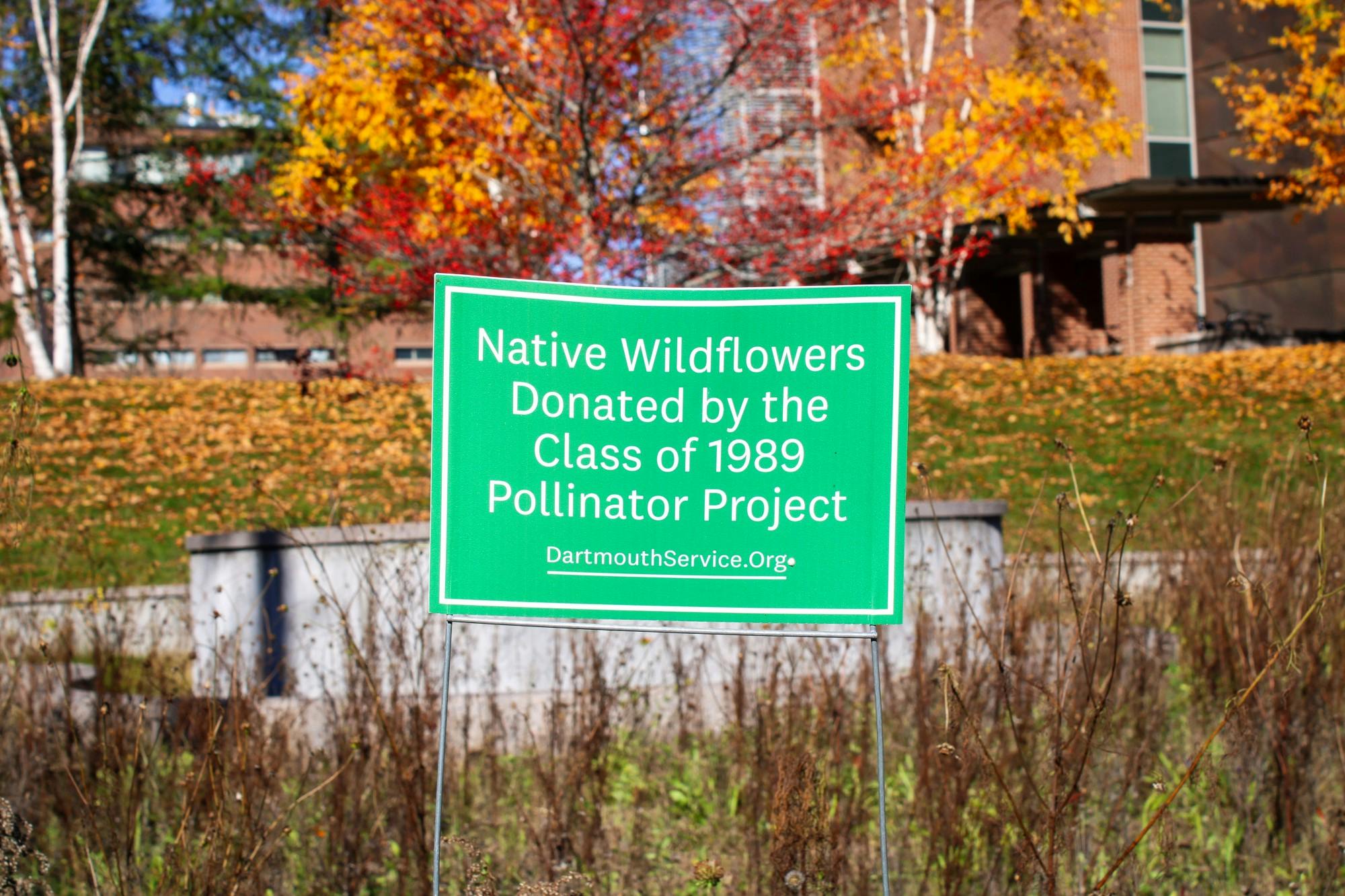The Class of 1989 Pollination Project, which began as an alumni outreach initiative, has united various campus groups around the issue of sustainable ecosystems, according to vice president of the Class of 1989 and project founder David Hammond ’89. The goal of the project is to increase the amount of habitat for pollinators like moths, butterflies and bees, which play an essential role in the ecosystem by growing patches of wildflowers around the Upper Valley, Hammond said.
Environmental studies professor Theresa Ong said that pollinator health is declining on a global scale, which may precipitate reductions in fruit, vegetable and grain supplies if not addressed. Pollinator populations have declined due to climate change, pesticide usage and habitat destruction, according to Hammond.
“One of the biggest issues is that pollinators no longer have a consistent and diverse supply of floral resources across the seasons,” Ong said.
Pollination is the process through which pollen is transferred from one plant to another for reproduction. Ong explained that one plant’s pollen — a powdery substance from the male reproductive organ of one plant — must travel to and land on the stigma — part of the female reproductive organ of a plant — of another flower of the same species to pollinate that plant. Pollinators, which include species like ants, bees and hummingbirds, facilitate this reproduction by spreading the pollen among flowering plants.
In order to increase the amount of habitat for pollinators, Hammond said that a seed mix of annual and native perennial plant species was sowed at 10 sites around the Upper Valley, including a Vermont elementary school, the old Dartmouth Cemetery, behind Baker-Berry library and next to the Collis Center. The sites are marked by green signs, he added.
Since April 2021, project volunteers consisting of College alumni and students and local elementary school students have planted more than 12,000 square feet of native wildflowers at the sites. The project has received additional funding from alumni, and Hammond hopes to double the square footage in the coming year. Contributing to this goal is the establishment of two to three new planting sites this fall, according to sustainability office intern Brian Arruda ’25.
Hammond said that he hopes the project will foster an ethos of environmental stewardship at the College.
“When you look at global climate change or habitat loss on a global scale, it’s hard to get your mind around all of it,” Hammond said. “Our effort is to do something — to do anything. Even if it’s small, that’s okay.”
Arruda said that he successfully pitched the expansion of the project to the buildings and grounds committee, citing the new planting locations across from the McLaughlin residence cluster and behind the Class of 1978 Life Sciences Center, where wildflowers will be planted over the next few weeks.
The environmental science department, the town of Hanover, the Center for Social Impact, alumni and students have all been involved in the project, Hammond said.
“[Some] classes are using our planting sites as a fieldwork location for their studies,” Hammond added.
Ong, who taught ENVS 25, “Agroecology,” in the summer, said that she utilized the Class of 1989 pollinator garden at the Dartmouth Organic Farm to “study the impact of growing these flowers on the biodiversity of pollinators and ecosystem services.”
Students in Ong’s class found many bee species and other pollinators visiting the new habitats, Ong said. The number of animal visitors were comparable to the Organic Farm’s traditional, “manicured” flower garden located about 30 feet away, Ong said, but in the future, the project’s usage of native wildflower species may have “a different impact on the pollinator community.”
Arruda said that he hopes the Class of 1989 Pollination Project will be officially included in Dartmouth’s Our Green Future updated report in April, which outlines goals and steps within fields like transportation, energy and landscape ecology that serve as the College’s roadmap toward a more sustainable campus.
Facilities Operations and Management associate director Timothy McNamara, who serves on a newly-created grounds subcommittee for the Our Green Future project, said that he hopes the project will look more deeply at the role the College can play to aid pollination around campus.
“I’m hoping the subgroup will deal with the pollinator project as part of their [task] and take a more comprehensive look at where else we can implement this on campus,” he said.
In the next two weeks, student and alumni volunteers will plant wildflower seeds at the new locations, according to Arruda. Now that the Upper Valley is past the first hard frost of the season, the seeds can be sowed, as they will not yet germinate but will be ready to sprout when the soil warms after the winter.
Hammond said he is excited about the future of the project and has been planting wildflowers with other Dartmouth alumni in Michigan, where he lives.
“If there is a lasting legacy from this project, I hope that we continue to think about ways to work together,” he said.




